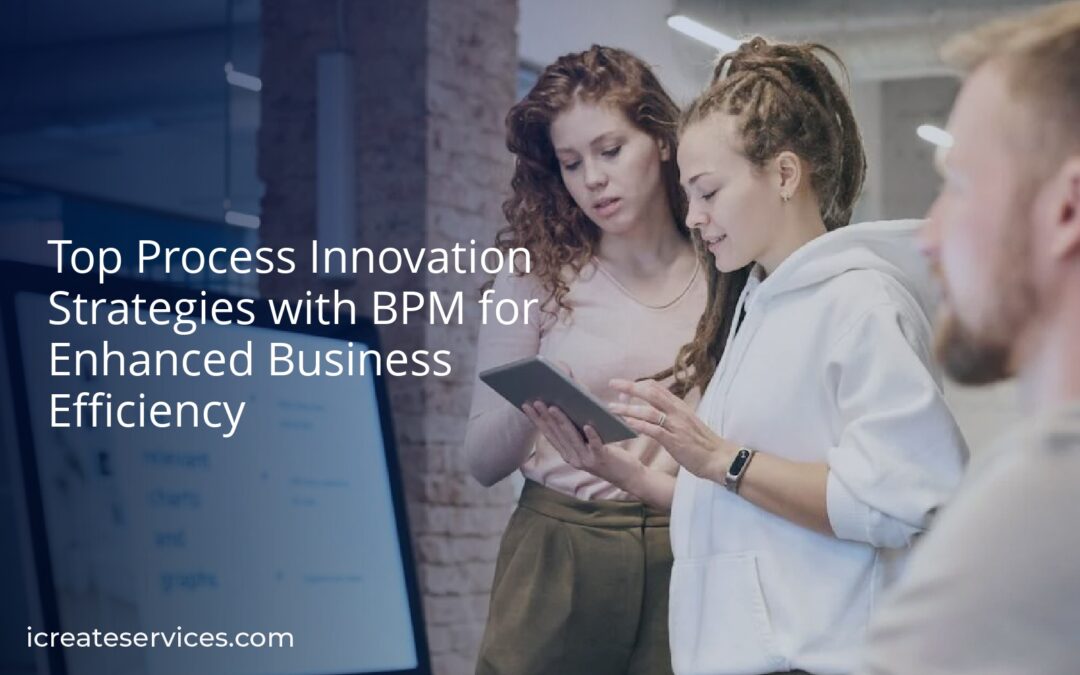Understanding BPM and Process Innovation
BPM (Business Process Management) and process innovation are critical for businesses striving to enhance their operations. Emphasizing the synergy between BPM and innovative strategies can yield substantial benefits.
What Is BPM?
BPM stands for Business Process Management. It focuses on the optimization of business processes through analysis, modeling, implementation, monitoring, and continuous improvement. By mapping out workflows, identifying inefficiencies, and redesigning processes, organizations can achieve better performance.
The Importance of Process Innovation
Process innovation involves rethinking existing processes to find new, more efficient methods. It plays a vital role in staying competitive, especially in dynamic markets. Leveraging BPM for process innovation helps us uncover bottlenecks, automate repetitive tasks, and ensure sustainability in our operational improvements.
Key Strategies for Process Innovation with BPM
Implementing BPM for process innovation necessitates focused strategies. We’ll explore three primary strategies essential for effective business transformation.
Streamlining Workflows
Identifying and eliminating inefficiencies in workflows optimizes operations. We can achieve this by mapping current processes, analyzing flow patterns, and pinpointing redundant tasks. For example, reassessing approval steps can remove unnecessary bottlenecks, leading to faster decision-making and improved throughput. Streamlined workflows reduce manual intervention, minimize errors, and save time across departments.
Leveraging Automation
Integrating automation within BPM elevates efficiency. Automating repetitive tasks allows employees to focus on higher-value activities. Implementing robotic process automation (RPA) can handle tasks like data entry, invoice processing, and customer service inquiries. Automation ensures consistency, speed, and accuracy. It also facilitates real-time monitoring, enabling quick adjustments when needed.
Enhancing Data Analytics
Harnessing data analytics within BPM provides actionable insights. We can analyze process data to identify trends, predict outcomes, and make informed decisions. Employing advanced analytics tools, such as machine learning algorithms, can help uncover hidden patterns and optimize workflow performance. Enhanced data visibility supports proactive management, leading to continuous process improvement and innovation.
Implementing BPM for Process Innovation
Implementing Business Process Management (BPM) enhances process innovation by systematically optimizing workflows. Specific steps ensure successful BPM deployment for maximum process innovation.
Identifying Improvement Areas
Analyzing current workflows identifies areas for improvement. We map existing processes to detect inefficiencies. We look for bottlenecks, redundant steps, and resource constraints. This analysis helps focus efforts on areas with the highest impact.
Developing an Implementation Plan
Creating a structured plan guides the BPM implementation. We outline clear objectives, assign roles, and set timelines. Detailed planning ensures resource allocation and risk mitigation. Our plan includes stakeholder engagement strategies to foster collaboration and buy-in.
Monitoring and Refining Processes
Ongoing monitoring assures continuous process improvement. We use key performance indicators (KPIs) to track process efficiency and effectiveness. Regular reviews identify areas for further refinement. Adjustments based on data-driven insights maintain optimal process performance.
By following these steps, BPM integrates seamlessly into our innovation strategy, driving significant operational improvements.
Benefits of BPM-Driven Process Innovation
BPM-driven process innovation transforms business operations, offering multiple benefits that enhance competitiveness in dynamic markets. Key benefits include increased efficiency, cost reduction, and improved customer satisfaction.
Increased Efficiency
Process efficiency improves significantly with BPM-driven innovation. BPM tools provide real-time analytics and monitoring (examples include dashboards and KPI tracking). These tools identify bottlenecks that slow processes. By redesigning workflows and automating repetitive tasks, we achieve faster cycle times and resource allocation.
Cost Reduction
Cost savings result from enhanced efficiency and waste reduction. BPM tools like process simulation and predictive analytics pinpoint unnecessary steps and resource usage. Automated workflows reduce labor costs by handling routine tasks. Decreased error rates from optimized processes also cut correction and rework costs.
Improved Customer Satisfaction
BPM-driven innovation leads to better customer experiences. Streamlined processes guarantee faster and more accurate service delivery. Enhanced data visibility enables personalized customer interactions, improving service quality. Automation ensures consistent service standards, fostering customer trust and loyalty.
Case Studies of Successful BPM Process Innovation
Examining real-world applications of BPM shows the effectiveness of process innovation. Various industries have implemented BPM strategies to optimize operations and gain a competitive advantage.
Industry Examples
Financial Services: Bank of America adopted BPM to streamline loan processing. By automating document workflows and integrating data analytics, the bank reduced processing times by 40%. Enhanced customer satisfaction resulted from faster approvals.
Healthcare: Mayo Clinic utilized BPM to improve patient care pathways. Standardizing procedures and using real-time data allowed practitioners to reduce patient wait times and enhance service quality by 30%.
Manufacturing: Toyota implemented BPM to refine supply chain management. Automating inventory tracking and predictive analytics minimized stockouts and met production schedules consistently. Operational efficiency improved by 25%.
Lessons Learned and Best Practices
User-Centric Design: Banks and hospitals learned to focus on user-centric process redesign. Engaging stakeholders early ensures the processes meet real needs.
Continuous Improvement: Businesses like Toyota embraced continuous improvement. Regularly reviewing and updating processes enhances sustainability and adaptability.
Leverage Technology: Effective BPM initiatives leverage technology like automation and analytics. Real-time data and advanced software tools deliver significant improvements in process efficiency.
By exploring these case studies and best practices, we see how BPM-driven process innovation effectively transforms business operations across various sectors.
Conclusion
Process innovation strategies with BPM are key to staying competitive in today’s fast-paced market. By continuously analyzing and improving our workflows, we can identify bottlenecks and implement automation for better efficiency. Real-world examples like Bank of America and Mayo Clinic show the transformative power of BPM-driven innovation.
As we adopt these strategies, focusing on user-centric design and continuous improvement is crucial. Leveraging technology will help us achieve optimal results. Embracing BPM for process innovation not only boosts efficiency and reduces costs but also enhances customer satisfaction. This approach positions us to thrive in dynamic markets.
- Demystifying Fuel Test Procedures and Standards - January 16, 2025
- The Benefits of SAP Invoice Management in Financial Processes - December 4, 2024
- Enterprise Software for Comprehensive Risk Management - July 29, 2024




